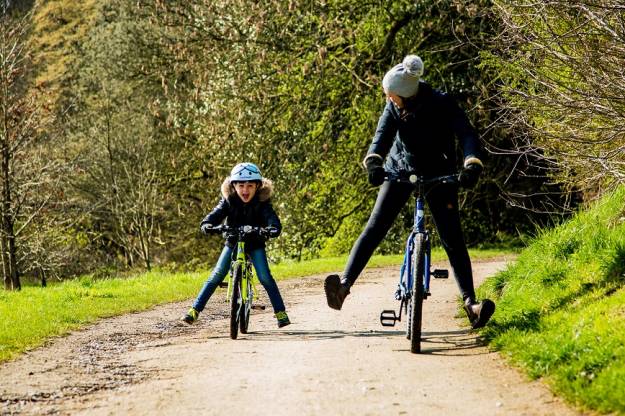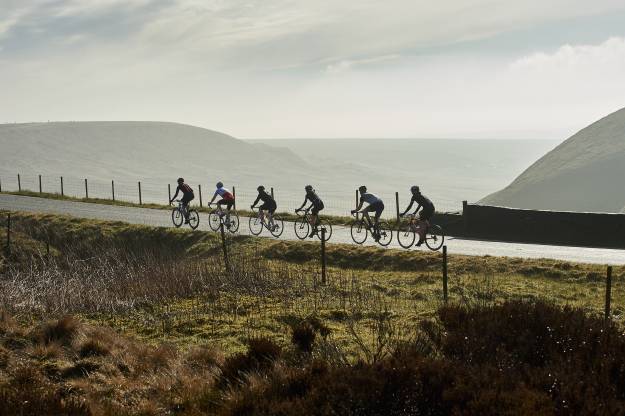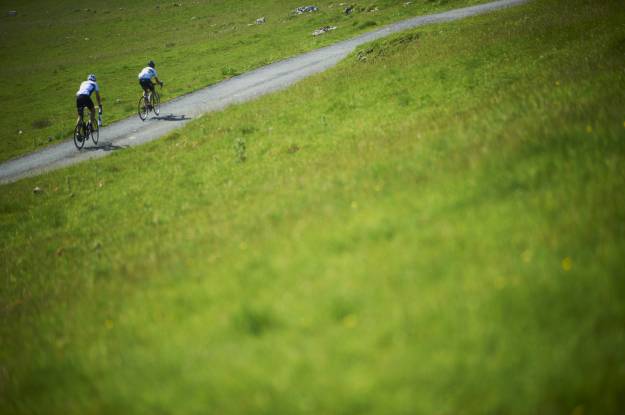![]() Follow britishcycling.org.uk on
Follow britishcycling.org.uk on ![]()
![]()
![]()
![]()
Daily Commuting Tips: Commuting on Ice
Posted: 8th January 2010 | Source: Eddie Allen
More: Daily Commuting Tips Archive
 The current big freeze is set to continue for another week according to our trusty weather forecasters, so it's high time we looked at some of the ways of coping with snow and ice.
The current big freeze is set to continue for another week according to our trusty weather forecasters, so it's high time we looked at some of the ways of coping with snow and ice.
Whilst the best advice is probably ‘hide indoors with a large supply of cocoa until it all goes away', you, like me will probably be itching to get out on the bike. A perverse little devil will be watching the cars slithering around, pedestrians doing hips and collar bones, and thinking ‘mmm, really want to give it a try on the bike.' So if you really must get the bike out, you'll do well to read this first.
The first major adjustment you need to make is in your head. Forget all preconceptions of cycling that you may have - e.g. average speed, cornering ability, braking etc and adopt the ‘anything faster than walking is a bonus' philosophy.
Riding on snow and ice is like nothing else you'll ever encounter. Even a fighter-pilot's reactions aren't fast enough to contend with that sudden and dramatic front wheel skid. So you're best bet is to do everything to avoid sudden traction loss, and also do everything you can to give you a fighting chance of a quick dismount or ‘dab' with the foot.
So in terms of bike and kit choice - it's got to be the mountain bike or at least a bike that can handle a large, knobbly tyre. Fat knobbly tyres are the way to go and will hook up better than road tyres. Unless you've already got studded tyres, don't bother - chances are that the icy weather will be gone before they arrive in the post.
If you haven't already got them, fit flat pedals - this will give you a fighting chance of a quick dismount or stabilising ‘dab' with the foot it you do lose traction, steering or, more often than not, both at the same time.
Consider lowering your seat a little - this will lower your centre-of-gravity and give you more confidence when things get slippery. Be prepared to get off and push if conditions get really dicey or if you lose your bottle - remember, even when walking, you're still making forward progress.
Also, avoid the roads as much as possible, using bike paths, park cut-throughs and other low traffic options. You'll find that main roads will have a clear central section, which means the cars will be travelling at pretty much their normal speed - however, the edges of the road will be slushy or rutted with chewed up ice, which can cause all sorts of problems. Furthermore many accidents occur when cars make the transition between icy side roads and clear main roads - another big reason to avoid trafficked routes.
When you're up and running, make all of your movements smooth, gentle and progressive. Smooth on the pedals, gentle with the steering and avoid braking as much as possible. If you do need to brake, use the back brake only - a rear wheel skid is much more predictable than a front-wheel wipeout.
My own personal weapon of choice for some weekend riding? I realise that not everyone has a shed-full of weird and wonderful bikes to play with, but I've got a Pashley Picador Trike which has been looking for it's moment to shine for a long time - perhaps at last its time has come... Three wheeled stability has got to work brilliantly on the ice!! Safer than walking perhaps?








